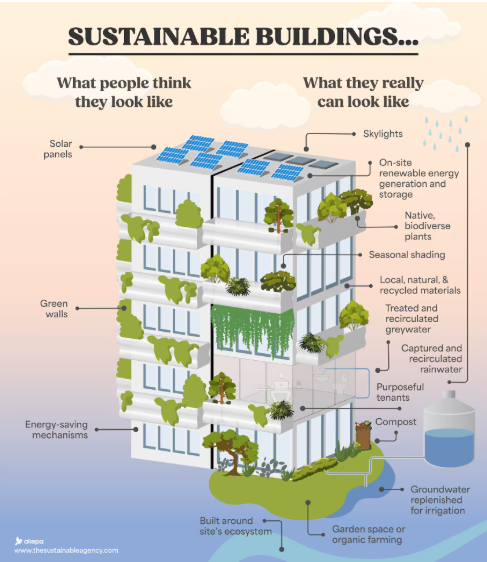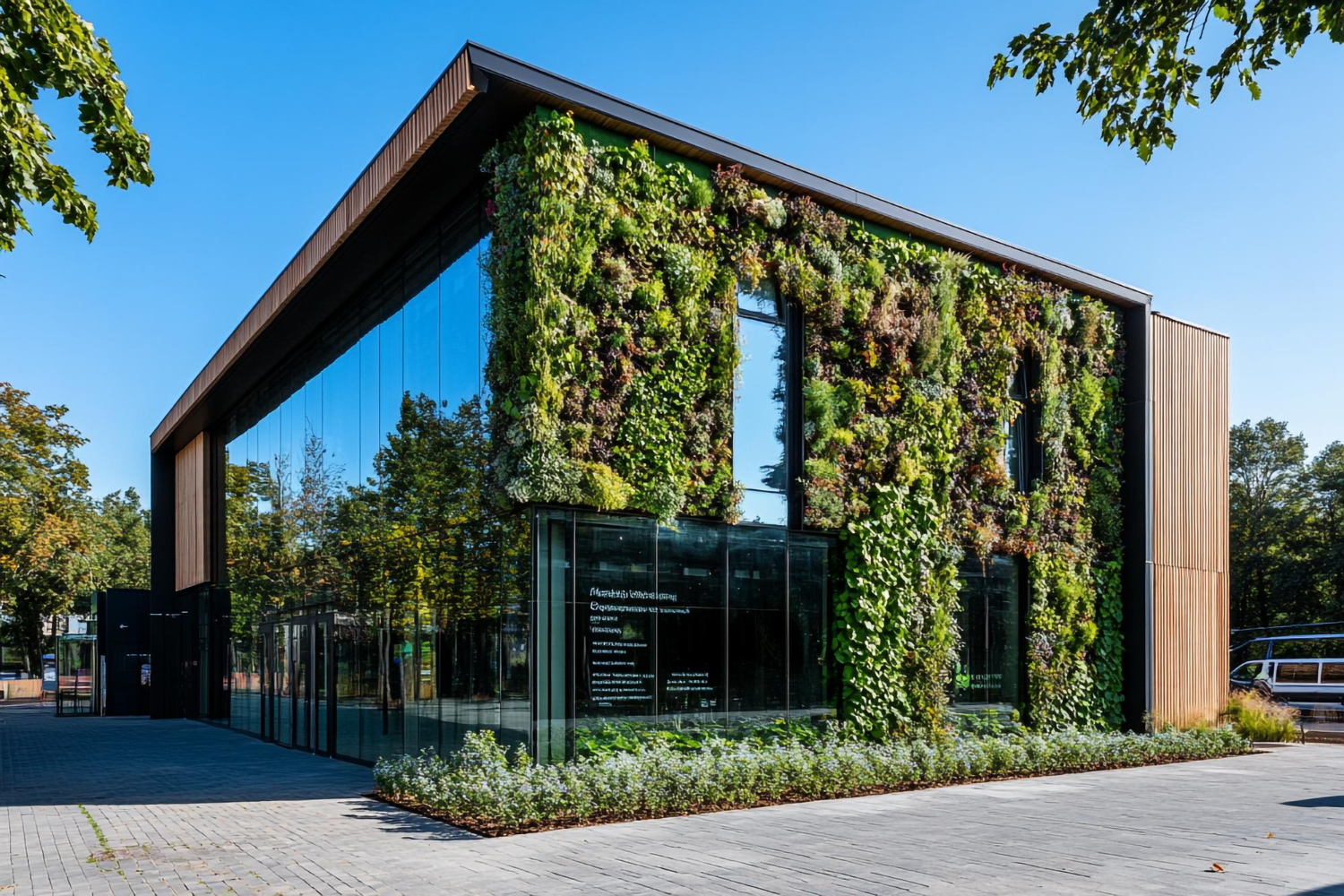Sustainability is no longer a luxury; it’s an essential component of property development. In 2025, eco-conscious design is no longer a niche trend but a driving force that shapes everything from residential blocks to commercial spaces. Eco-conscious design is reshaping how real estate is built, valued and maintained. From reducing carbon footprints to enhancing community well-being, sustainable design has become a driving force in the industry.
In a world increasingly focused on environmental responsibility, Laskill Grange is focused on making changes to meet evolving demands and regulations in its projects. Let’s explore how sustainability is changing the real estate landscape.
Why Sustainability Is No Longer Optional in Real Estate
Sustainability is no longer a trend, it’s become an essential factor in property development. As the UK government sets a Net-Zero Carbon Standard for 2030, sustainability isn’t optional anymore; it’s a legal requirement, especially with regulations around energy efficiency and waste reduction becoming stricter.
95% of investors and developers consider sustainability a deal-breaker and want to see it factored in their portfolios. Properties have to maintain a higher environmental standard. Whether you’re dealing with residential or commercial properties, eco-friendly buildings should not only meet the demands of today’s conscious buyers but also increase long-term value.

Source: https://thesustainableagency.com/blog/what-makes-a-sustainable-building/
Energy Efficiency as a Design Priority
Developers are increasingly focusing on acquiring energy and sustainability certifications. To achieve this they are incorporating features like passivhaus standards, high-performance insulation and triple-glazed windows to reduce heating and cooling costs. Long-term, the more energy-efficient a building is, the lower its running costs and the better its value in the long term.
Renewable energy sources like solar panels and heat pumps are rapidly becoming standard. They reduce a property’s environmental impact, make buildings self-sufficient and save money on utility bills in the long-term.
Case study: Pall Mall, Manchester
Pall Mall is a Grade II listed building in Manchester undergoing a deep retrofit to achieve a 74% reduction in Energy Use Intensity. The project includes replacing glazing and building services, alongside a complete internal refurbishment, to meet modern sustainability standards. Despite initial planning challenges regarding glazing upgrades, comprehensive energy modelling and net-zero targets led to successful consent. The redevelopment aims to increase rental value and attract tenants with strong sustainability credentials.
The Rise of Natural & Low-Maintenance Materials
As the industry pushes towards more sustainable practices, natural and low-maintenance materials are gaining momentum. Durable materials like timber, stone, and bamboo are becoming central to modern building projects. Not only do these materials help reduce the environmental impact of sourcing raw materials, but they also contribute to the overall longevity of the building.
Developers are increasingly opting for natural, durable materials that last longer and require less maintenance. Durability is one of the most underrated aspects of sustainable design. Finishes such as polished plaster are becoming increasingly popular in sustainable design due to its sleek, modern and timeless aesthetic. Materials that last longer reduce the need for frequent refurbishments, cutting both cost and environmental impact.
Biophilic Design: Bringing Nature Indoors
Biophilic design is all about connecting people to nature by integrating natural elements into interior spaces. Natural elements like plants, natural light, and organic materials, are becoming increasingly popular in both residential and commercial spaces. A biophilic environment creates a sense of calm and well-being overall.
According to Human Spaces, workplaces with biophilic features report a 15% boost in employee well-being and a 6% increase in productivity. Imagine the positive impact that could have on your business or your tenants.
Case study: Paradise 11, London
Paradise 11 is a timber-structured office building in Vauxhall, London, constructed with cross-laminated timber (CLT) floors and glulam beams. The project adopts a holistic approach to sustainability, achieving BREEAM Excellent rating, WELL Gold, and an EPC rating of ‘A’. It also meets the LETI 2030 design target for embodied carbon. The design prioritises biophilic principles, including natural light, air quality, and exposed natural materials, aiming to create “London’s Healthiest Workspace.”
Future-Proofing Residential & Commercial Spaces
Future-proofing is becoming a key part of any sustainable design. Developers are increasingly focused on creating buildings that can withstand the challenges posed by climate change, like extreme weather and rising temperatures. Whether it’s through flood-resistant designs or incorporating renewable energy sources, future-proofing helps buildings stay relevant and functional for years to come.
Smart technology also plays a huge role in future-proofing. Automated systems for heating, cooling, and lighting not only make homes and offices more energy-efficient but also add a level of convenience that today’s buyers are looking for.
Case Study: The Crystal
Siemen’s The Crystal, located in London’s Royal Docks, stands as a prime example of future-proof design. Serving as a global center for sustainable urban development, it houses Siemens’ Global Cities Centre of Competence and features the world’s largest exhibition dedicated to the future of cities. The building has achieved both BREEAM Outstanding and LEED Platinum certifications, the highest ratings in sustainable building design. Designed as an ‘all-electric’ building, The Crystal utilizes solar power, ground source heat pumps, and energy-efficient LED lighting, with no fossil fuels used on-site.
Sustainability as a Community Value
Sustainability goes beyond just energy efficiency; it’s about building communities that thrive. Green spaces, communal areas and pedestrian-friendly designs all play a significant role in fostering a sense of belonging and well-being. Developers are increasingly recognising that people want to live and work in places that feel connected to nature and their community.
According to the RICS Sustainability Report 2023, the demand for green buildings continues to rise globally with an interest from both occupiers and investors in climate-adapted real estate. But only a third of the occupiers measure carbon or examine the effects of building materials and components. As occupants we need to continue to push for greener, more community-focused spaces and take a vested interest in the environmental performance of a building.
Conclusion
Sustainable design isn’t just about meeting regulatory standards; it’s about creating buildings that are both environmentally responsible and valuable in the long run. From energy-efficient buildings to the use of natural materials, the trends shaping the industry are all geared towards creating a healthier & more sustainably built environment.
At Laskill Grange, we’re proud to be at the forefront of these trends, working to create properties that are not only innovative but are also sustainable for generations to come.



